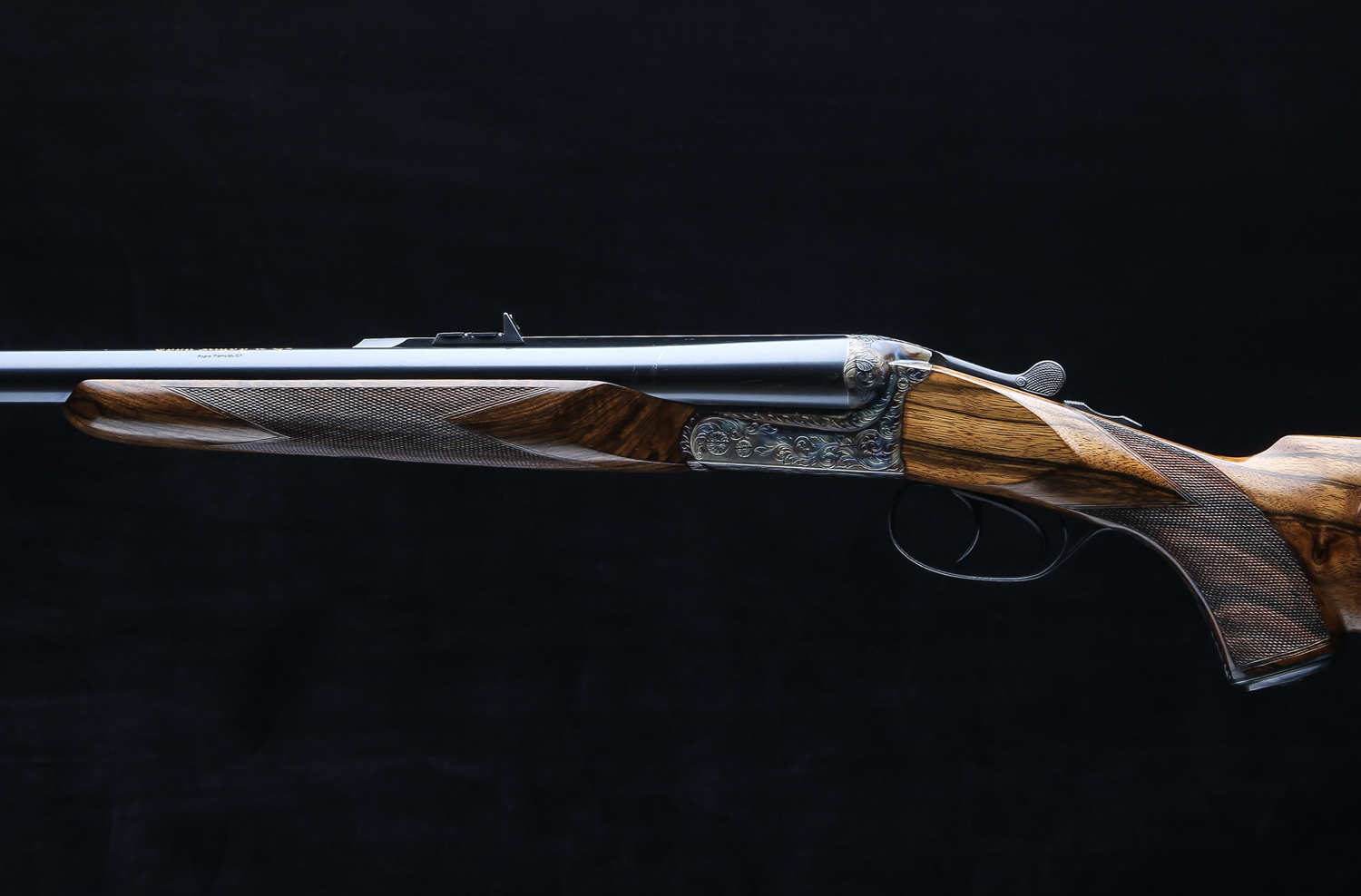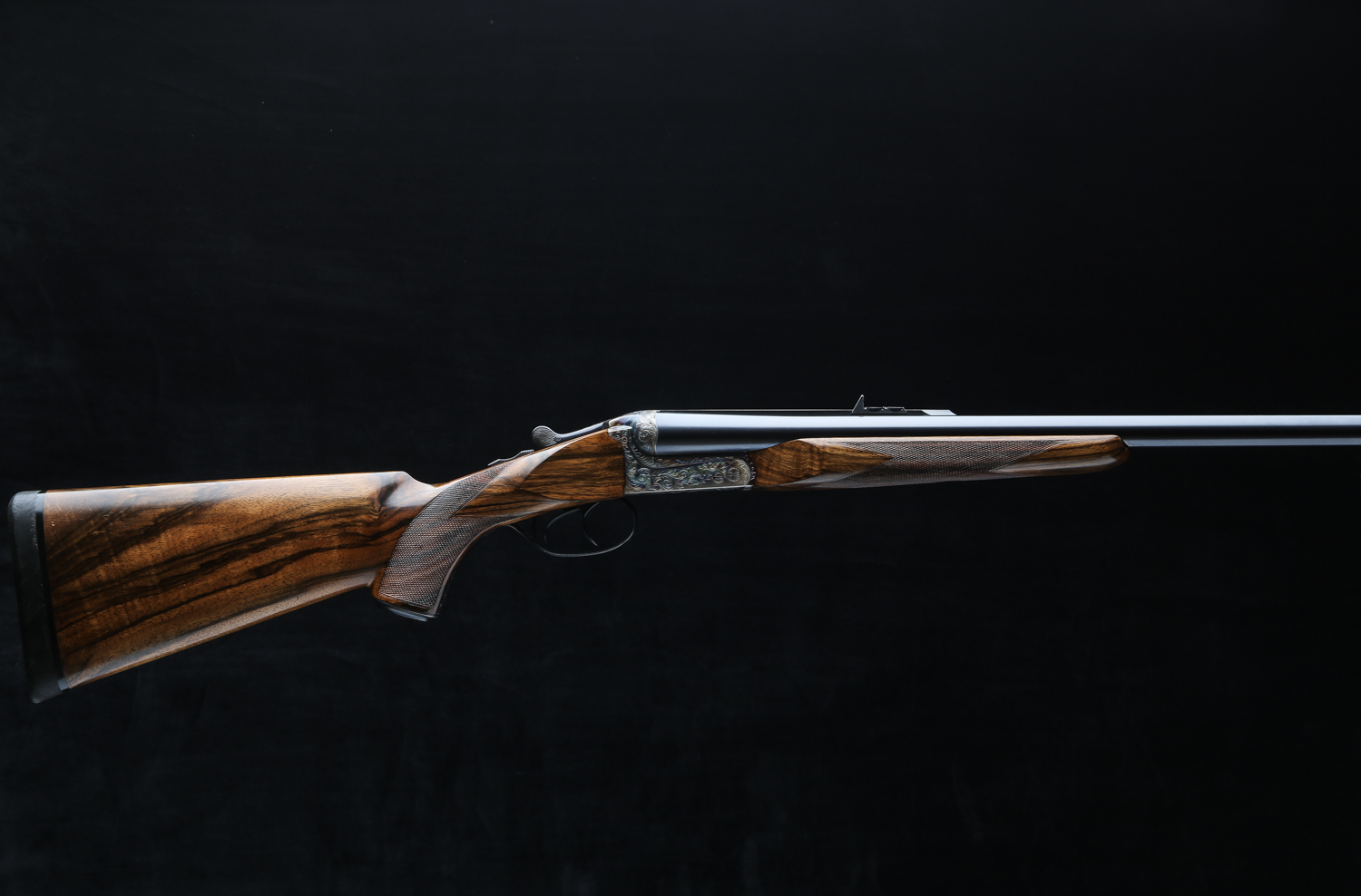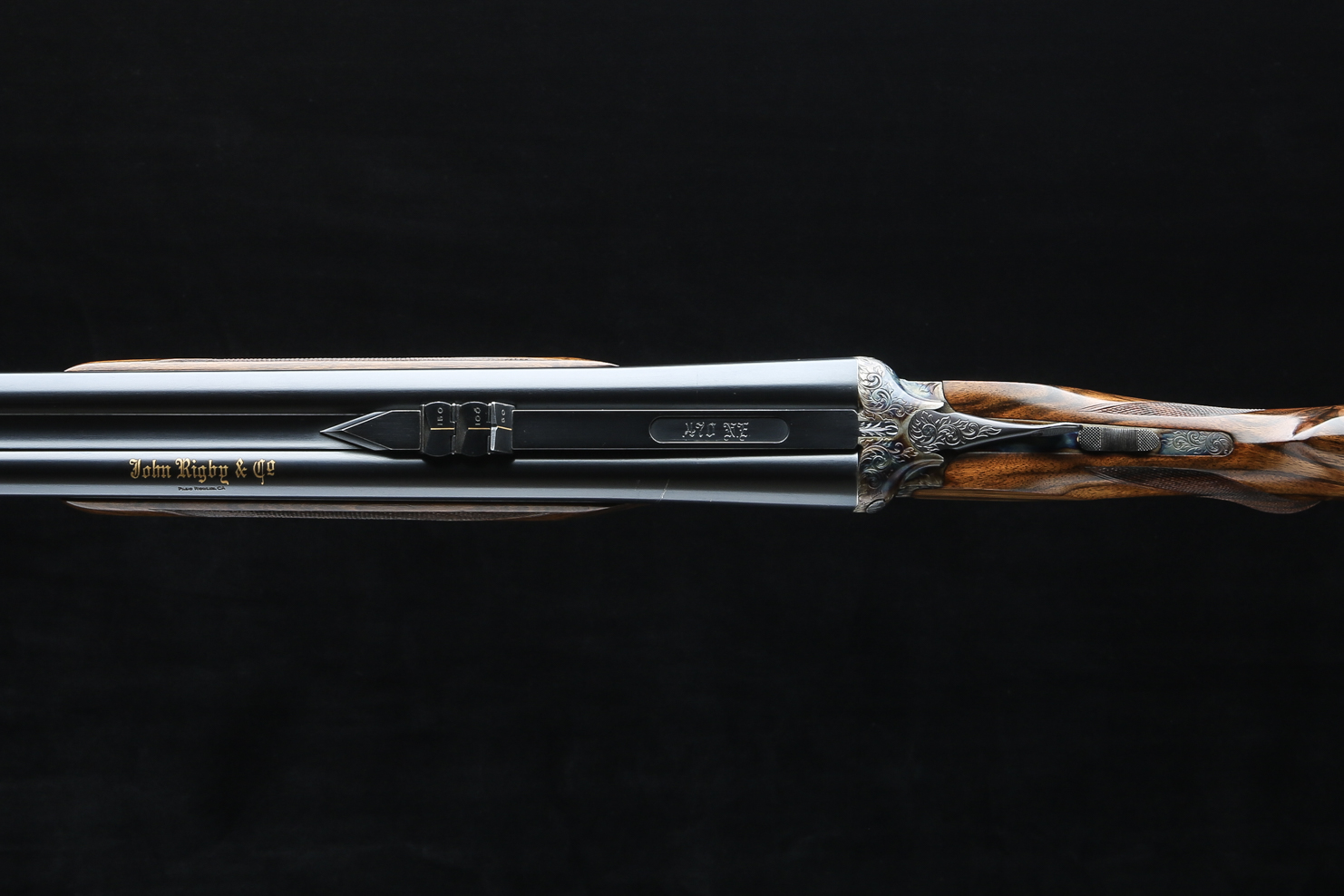Category: Ammo
The .244 H&H Magnum By Chuck Hawks

The .244 H&H Magnum was introduced in 1955. It could be considered the final word in 6mm cartridges. As factory loaded it exceeds the muzzle velocity (MV) of the .240 Weatherby Magnum by about 100 fps. Loaded to the same pressure with modern powders it would beat the hot Weatherby Magnum by more, as it has a longer and fatter case of considerably greater capacity.
The other modern 6mm magnum, the .243 WSSM of 2003 pales in comparison to real magnums like the .240 Weatherby and .244 Holland & Holland. (See my article “Compared: The .243 WSSM and .240 Weatherby Magnum.”)
The .244 is based on the full length .375 Magnum case with less body taper and a shortened neck. The rim diameter is the usual .532″ of magnum cartridges. The base diameter just forward of the belt is .508″ and the shoulder diameter is .445″. The case length is 2.78″ and the cartridge overall length (COL) is 3.58″. Bullet diameter is .243-.244″, and large rifle magnum primers are required.
The British factory ballistics called for a 100 grain bullet at a MV of 3500 fps and muzzle energy (ME) of 2725 ft. lbs. This was achieved by some 74 grains of an unspecified smokeless powder (not Cordite). At 200 yards the remaining velocity was 2970 fps and the kinetic energy 1980 ft. lbs.
I do not know the ballistic coefficient of the British bullet, but the trajectory of that load using a 100 grain Speer Grand Slam bullet (BC .351) would look like this: +2.3″ at 100 yards, +3″ at 165 yards, +2.7″ at 200 yards, and -3″ at 330 yards. The maximum point blank range (+/- 3″) would thus be 330 yards, putting the .244 H&H Mag. near the top of ultra-long range cartridges.
There is always a price to be paid for that kind of performance, and in the case of the .244 Magnum that meant excessive recoil and muzzle blast for a .24 caliber cartridge and short barrel life. Forcing that much incandescent gas through a small bore cannot be good for the barrel.
As it happened, shooters all over the world for once rewarded moderation and good design by laying down their hard earned cash for .243 and 6mm rifles, while sales of Holland’s super magnum lagged. Today the .244 H&H Magnum is, as far as I can determine, obsolete. Given sufficient monetary incentive, however, Holland & Holland might be willing to make one up. No factory loaded ammunition or production rifles are offered in the caliber.
If so, reloads would be a matter of research and educated guesswork. Obviously, the slowest burning powders would be called for. I’d probably start with .240 Weatherby loads using RL-25 or IMR 7828 powder behind a 100-105 grain bullet and work up gradually.
Nevertheless, the .244 H&H Magnum represents some sort of high water mark in the development of the 6mm cartridge. To use an aviation analogy, you could think of it as the Concorde of rifle cartridges.
The classic .25-06 Remington had exhibited little potential to make the transition to the modern long-range era—until recently.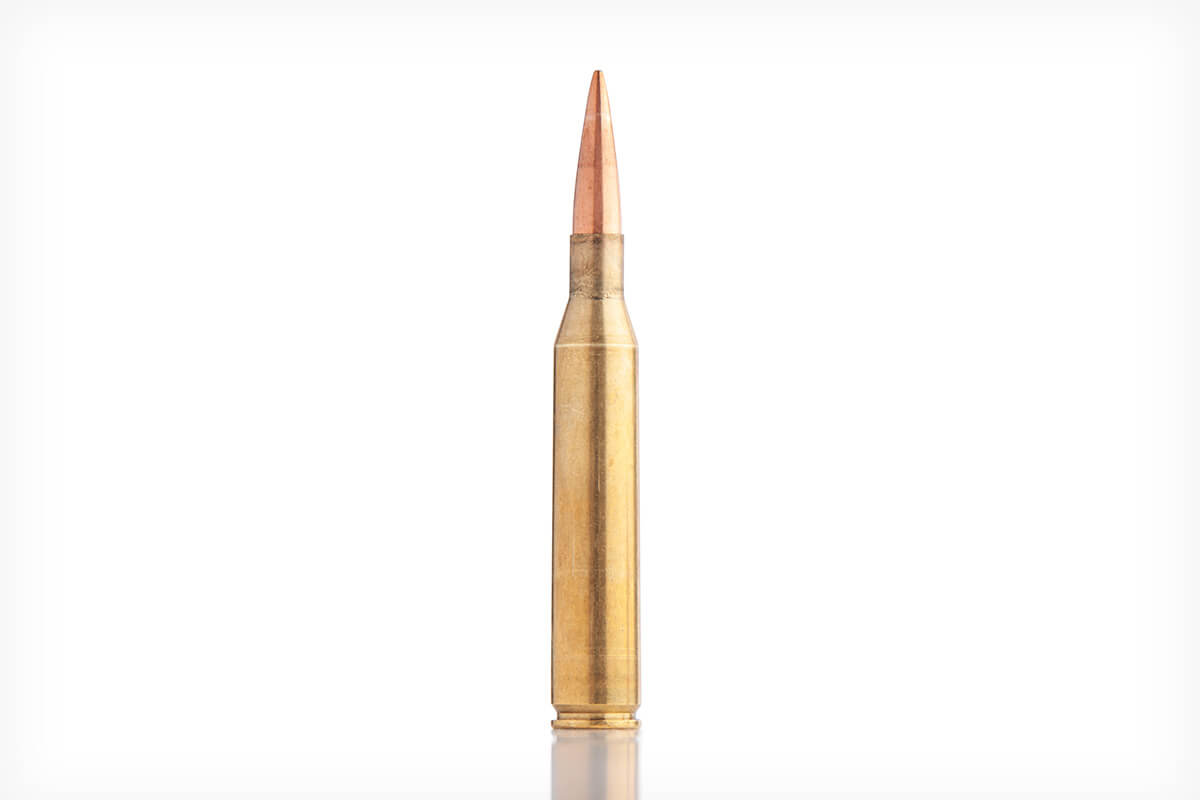
Long ago, at the awkward age of 15, I slid my hands reverently along the beams of a massive mule deer buck my old shooting mentor Bill Cox had recently taken. “Just” 28 inches wide, the buck’s antlers were massive, long, and deep-forked. Gnarly Coke-can-size bases added visual impact. Already a ballistic nerd, I had to ask, “What did you shoot him with?”
“My old .25-06,” was his response, and he waved toward the customized Mauser 98 leaning in a corner. I had seen the rifle before. It had a long, heavy match-grade barrel free-floated in a nice walnut stock by Reinhart/Fajen (now Macon Gunstocks).
Bill had made the rifle many decades before, during a stint of weeding out the crows that were marauding his cornfields. His shooting partner had a 6mm Remington with more reach than Bill’s .22-250. Tired of getting outshot past 400 yards, Bill put a 28-inch, bull-diameter, .25-caliber barrel on a Mauser 98 action, chambered it to .25-06, bedded it carefully, and scored an 800-yard hit on a faraway crow the first day out.
I needed to know more.
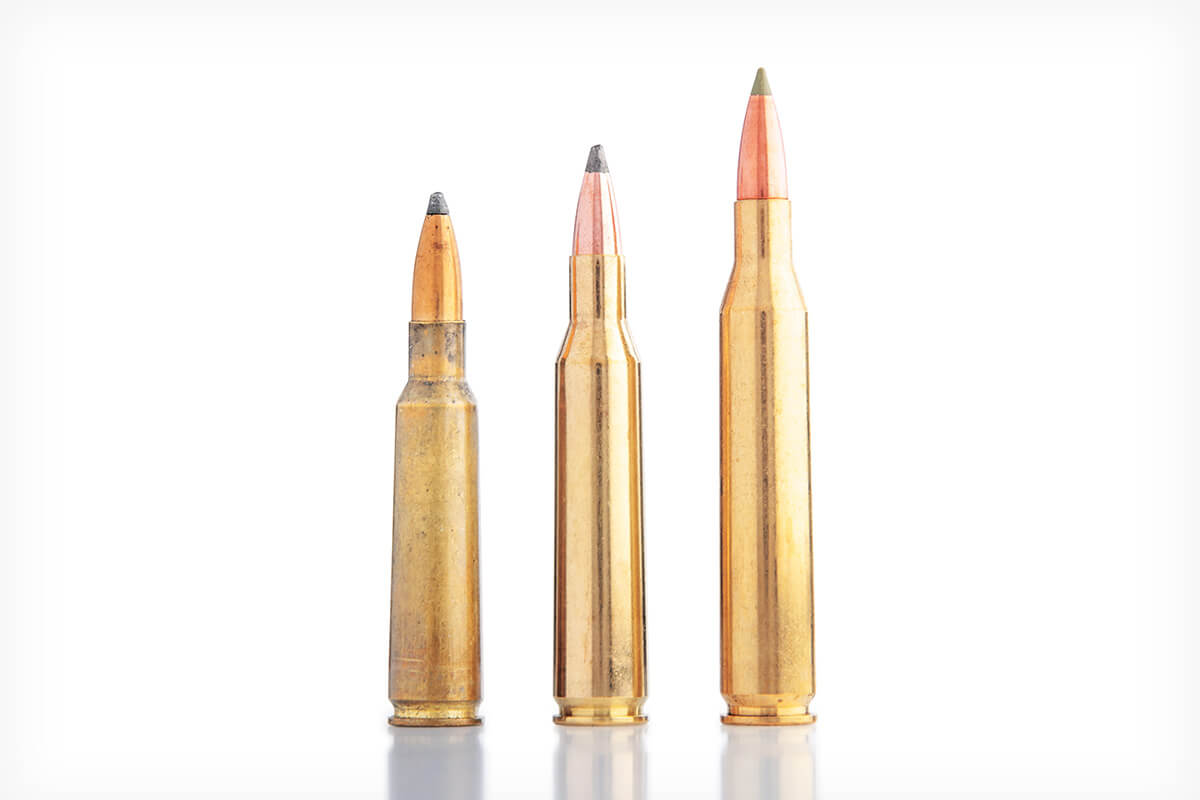
When I asked if it still shot well, Bill suppressed a grin and dug out the target he’d used to verify his zero before hunting. It had one peanut-shaped hole about two inches above center. “That’s five shots at 100 yards,” he told me.
Awestruck, I looked from the target to the rifle to the big buck. Even at that young age I leaned toward bigger-bore cartridges, but I knew that someday I’d own a special .25-06 myself.
Legitimized in 1969 by Remington, the .25-06 is more or less simply a necked-down .30-06. Long before Remington registered the cartridge with SAAMI, wildcatters, including Col. Townsend Whelen and A.O. Neider, experimented with various iterations.
Early work produced uninspiring results when compared to the older .250 Savage and .257 Roberts because the gunpowders of the time weren’t capable of utilizing the .25-06’s increased case capacity. It wasn’t until surplus military propellants became available after World War II that the .25-06 came into its own, generating velocities that eclipsed the smaller quarter-bores.
Technically, the .25-06 has a relatively shallow shoulder angle—just 17.30 degrees. Maximum overall cartridge length is specified at 3.250 inches, so it will fit in all .30-06-length actions. That said, many rifles have slightly longer magazine boxes and will allow handloaders a bit of leeway in seating-depth. Case length, base to mouth, is 2.494 inches. Trim-to length is usually listed at 2.484 inches.
The case head measures 0.474 inch in diameter, just like its parent .30-06 case. As registered to SAAMI, rifling is a twist rate of 1 turn in 10 inches with six grooves.
Factory ammunition usually achieves around 3,000 fps with 115- to 120-grain bullets and more than 3,200 fps with 100-grain projectiles. Zesty handloads push 110- to 117-grain bullets to 3,150 fps, resulting in flat, forgiving trajectories at traditional hunting distances.
Recoil is light, usually less than 15 ft-lbs in an 8-pound rifle. (The .30-06 generates approximately 35 percent more recoil.) For varmints and predators, savvy handloaders can achieve up to 3,600 fps with a thin-jacketed 75- to 85-grain projectile. When a big coyote gets wary and there’s no time to laser the range, the über-flat trajectory and impressive wallop frequently makes the difference between bringing home a heavy pelt or just a rueful story.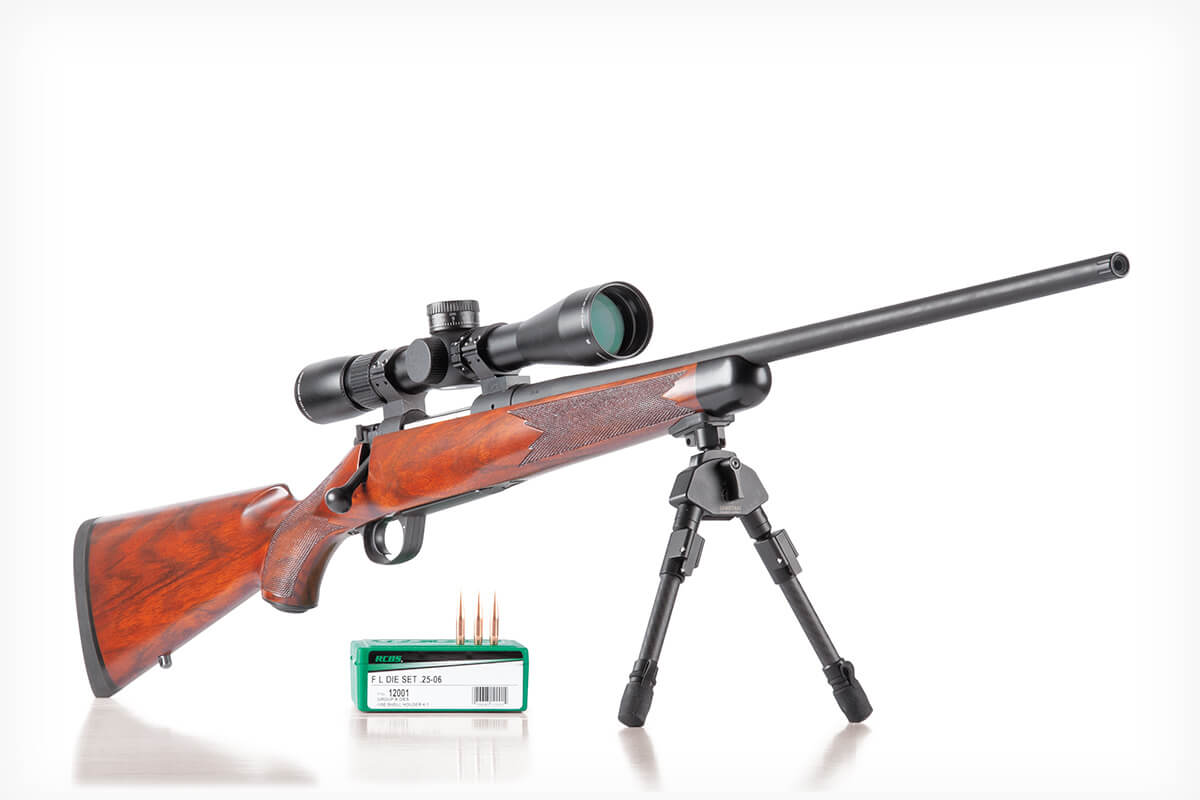
Twenty years after I drooled over and dreamed about Mr. Cox’s .25-06, I watched friend and mentor Scott Rupp, editor in chief of RifleShooter magazine, pull off a challenging shot on a Colorado pronghorn antelope with his own .25-06 (a favorite customized Model 700 Strata by Rifle’s Inc.) Knowing he’s carried on a longtime love affair with the .25-06, I asked why.
“It just works,” he said. “It kills everything I point it at.”
Open-country Western deer and antelope hunters, particularly in Wyoming and the Dakotas, feel the same. While the .25-06 has never achieved the widespread popularity of its .30-06 parent cartridge or its .270 Winchester sibling, most likely because the bigger-diameter bullets are distinctly better for elk, it has a cult-like following among those who have used it.
Still, the classic old quarter-bore had little potential to make the transition to the modern long-range era—until recently.
Why? Because, as mentioned, it was originally specified with a 1:10 rifling twist rate, which is too slow to stabilize long, heavy, aerodynamic bullets that are so popular today. In fact, during the first century or so that .25-caliber deer cartridges existed, no bulletmaker made .25-caliber projectiles with high ballistic coefficients (BC). That’s understandable. If no rifle would spin them fast enough to shoot accurately, why make them?
Then, a few years back, an upstart company called Blackjack bullets created one. Its match-grade, 131-grain ACE projectile has an unprecedented G7 BC of .340. On the G1 BC scale, that’s about .645. Impressive. Designed for a necked-down 6.5 Creedmoor wildcat called the .25 Creedmoor, it was conceived to take quarter-bore performance into the future.
As a side note, I differentiate the .25 Creedmoor from the earlier 2Fity-Hillbilly cartridge created by my friend Richard Mann purely by virtue of its very fast rifling twist rate, engineered more or less specifically for the 131-grain ACE bullet.
Predictably, the 131-grain ACE requires a fast rifling twist rate to stabilize. Put it in your old .25-06 with a 1:10-twist barrel, and it will tumble on its way downrange and put keyholes in your target. Plus, .25-06 cartridges topped with ACE bullets may not fit in your rifle’s magazine. The projectile’s nose is so long, with such a sleek taper, it protrudes much farther than traditional .25-caliber bullets.
However, with a fast, 1:7-twist barrel, .25 Creedmoor rifles provide jaw-dropping long-range performance. I tested the Blackjack bullet in a heavy-barreled custom rifle configured for PRS-type competition made by Short Action Customs, and it produced half-MOA accuracy. To my surprise, the 131-grain ACE achieved nearly 2,900 fps and ballistically trounced comparable bullets in the 6.5 Creedmoor and 6mm Creedmoor.
While I’ve shot competitively for more than three decades and thoroughly enjoy doing so, my real passion is hunting deep in wild, remote country.
The .25 Creedmoor match rifle was much too heavy for that, but I reasoned a sleek .25-06 with fast-twist rifling would be just perfect. I could shoot traditional big-game bullets at deer and antelope, light varmint and predator bullets while calling coyotes, and the super-aerodynamic ACE bullets for extreme-range target shooting. It was time to build the ultimate .25-06 I’d daydreamed about in my teens.
Building the Ultimate Modern .25-06
A local gunshop had a Kimber 84L Classic Select in stock. I purchased it for $1,000 and ordered a 24-inch stainless-steel Bartlein barrel with gain-twist, T-type 5R rifling that started at 1:8 and increased to 1:7.48 at the muzzle. It cost $355, but I figured the barrel’s quality should provide the desired accuracy. To preserve the rifle’s minimal weight and make it optimal for backcountry hunting, the contour is nearly, but not quite, as slender as the original Kimber barrel.
Rifle and new barrel in hand, I had Steve Pratt of Elk Meadow Performance install and chamber the barrel and apply a fresh coat of matte black Cerakote. Then I had Roland Black bed the action. All that cost another $475. Total cost for my custom .25-06 was $1,830.
I mounted a Vortex Razor HD LHT 3-15X 42mm riflescope, and the finished rig weighs exactly 7 pounds, 12 ounces—just perfect for a Western deer and antelope rifle. It took some work, but eventually Joseph found a handload with Alliant Reloder 16 powder that pushes the high-BC Blackjack 131-grain ACE projectile at nearly 3,000 fps and produces tiny groups.
It took some work, but eventually Joseph found a handload with Alliant Reloder 16 powder that pushes the high-BC Blackjack 131-grain ACE projectile at nearly 3,000 fps and produces tiny groups.
As I write this, ammo and reloading supplies are scarce to non-existent. However, I had a few boxes of Hornady, Federal, and Barnes ammo on hand. Three of the six loads I tried averaged right at 0.75 MOA. That’s pretty stellar for factory ammo in a relatively lightweight rifle.
With a bunch of cases accumulated, I began developing handloads. I had several different 0.257-inch-diameter component bullets on hand, including the Blackjack 131-grain ACE bullets.
They proved to be a tad finicky. I couldn’t load them to kiss the rifling leade and also feed through the magazine, so I opted to work with the necessary jump. Single-loading cartridges, while possible, rather defeats the purpose of having a repeating rifle.
A charge of IMR 8133 generated more than 3,000 fps and resulted in decent 0.90-inch groups at 100 yards. To my chagrin, my first attempt with H1000 (a favorite powder of mine) produced just 2,755 fps and 1.36-inch groups. Back I went to the loading bench.
On the plus side, all the other handloads I tried—with a variety of projectiles—averaged less than one MOA.
In a continued effort to achieve a super-accurate, magazine-compatible load with the 131-grain ACE bullet, I worked up two test batches using Alliant Reloder 23 and Reloder 16. Reloder 23 is theoretically ideal for the .25-06 with heavy-for-caliber bullets, and I just wanted to try the Reloder 16 because I’ve had such tremendous luck with it in the 6mm Creedmoor cartridge.
Contemplating the possibility that the long, high-BC bullets could possibly be not “settling” yet at 100 yards, I loaded enough cartridges with Reloder 23 to test at 200 yards as well.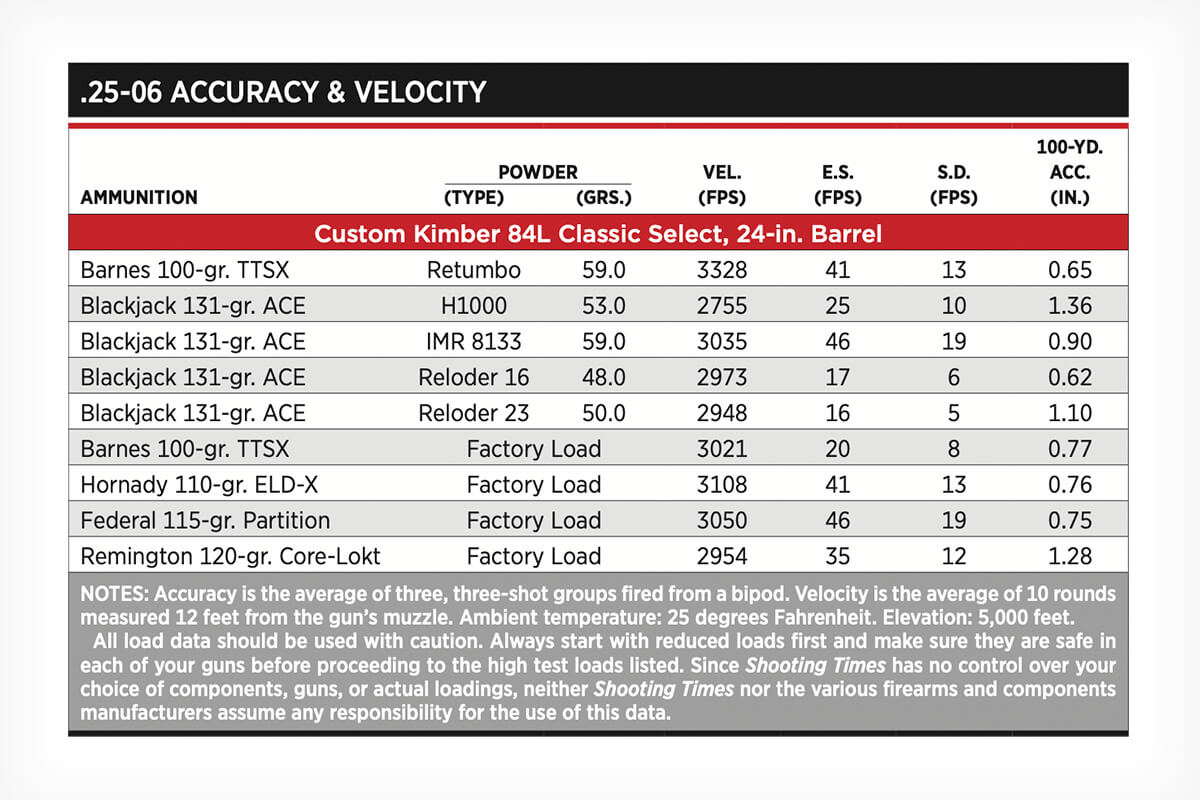
Wouldn’t you know it, Reloder 16 produced splendid groups, averaging just over 0.60 inch at 100 yards. Speed, at 2,973 fps, was about 60 fps slower than with IMR 8133, but accuracy was better.
Velocity was more consistent, too, In fact, velocity consistency was excellent with both Reloder propellants, with standard deviation well down in the single digits. However, Reloder 23 wasn’t as accurate, averaging a little over an inch at 100 yards. But Reloder 23 was what the extra cartridges for 200-yard testing were loaded with. Figuring I’d still garner some useful info, I forged ahead. I was not surprised to see that the long, slender 131-grain ACE did indeed shoot better, comparatively, at 200 yards than at 100 yards. Group-size average edged under one MOA.
My custom .25-06 doesn’t have the weight or length that Mr. Cox’s rifle had, and it won’t shoot one-hole, five-shot groups, but it is much more suitable for packing up steep, gnarly terrain. Plus, it will keep bullets supersonic all the way to 1,975 yards, courtesy of extreme BCs and the fast-twist barrel. And that’s something that wasn’t even possible just 10 years ago.
.25-06 Specifications
- Parent Cartridge: .30-06 Springfield
- Capacity: 70 grains of water filled to case mouth (as measured)
- Overall Case Length: 2.494 in.
- Trim-To Case Length: 2.484 in.
- Cartridge Overall Length: 3.250 in.
- Primer: Large Rifle
- Pressure Limit: 63,000 psi
Custom Kimber 84L Classic Select Specifications
- Manufacturer: Kimber kimberamerica.com
- Type: Bolt-action repeater
- Caliber: .25-06
- Magazine Capacity: 5 rounds
- Barrel: Bartlein gain-twist 1:8–1:7.48 rifling, 24 in.
- Overall Length: 43.75 in.
- Weight, Empty: 6.38 lbs.
- Length Of Pull: 13.75 in.
- Stock: Walnut with ebony fore-end cap
- Finish: Charcoal black Cerakote
- Sights: None; drilled and tapped for scope bases
- Trigger: 2.63-lb. pull (as tested)
- Safety: Three-position wing-type
- MSRP: $1,830
